These Reasons Why the Iditarod Race Should Be Terminated Will Leave You Outraged
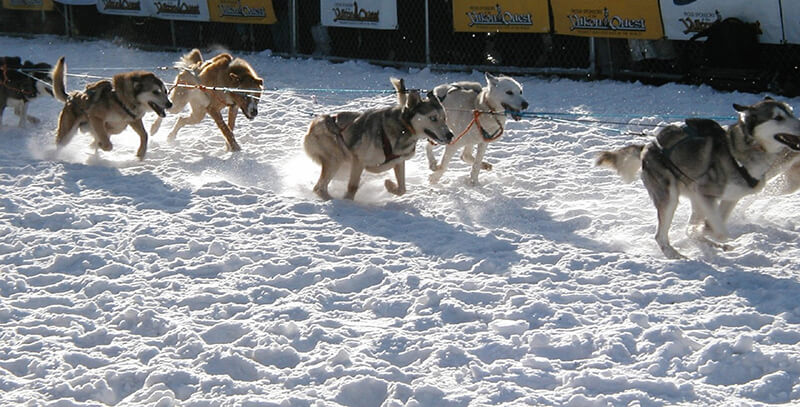
It’s been reported that in the first Iditarod race, at least 15 dogs died—and the body count has continued to pile up since then. Here are just eight reasons why the Iditarod is a deadly nightmare for dogs forced to race.
1. Dog deaths at the Iditarod are so routine that the official rules blithely state that some may be considered an “Unpreventable Hazard.”
The Iditarod has killed more than 150 dogs since it began in 1973, and those are just the reported deaths. Five died in 2017 alone.
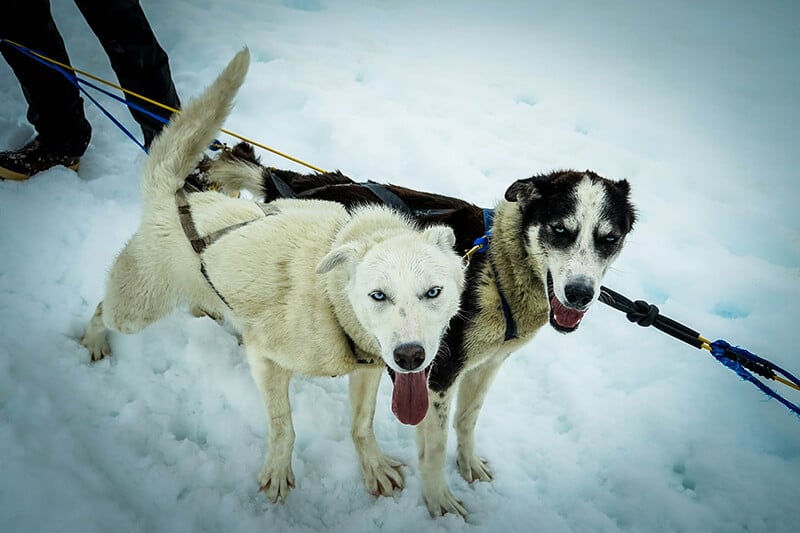
In just the last five years, dogs competing in the event have died from various causes, including being hit by a car, being struck by a snowmobile, being buried in snow, heart attacks, excessive fluid in the lungs, and acute aspiration pneumonia—caused by inhaling their own vomit.
2. If the dogs don’t die on the trail, they’re still left permanently scarred.
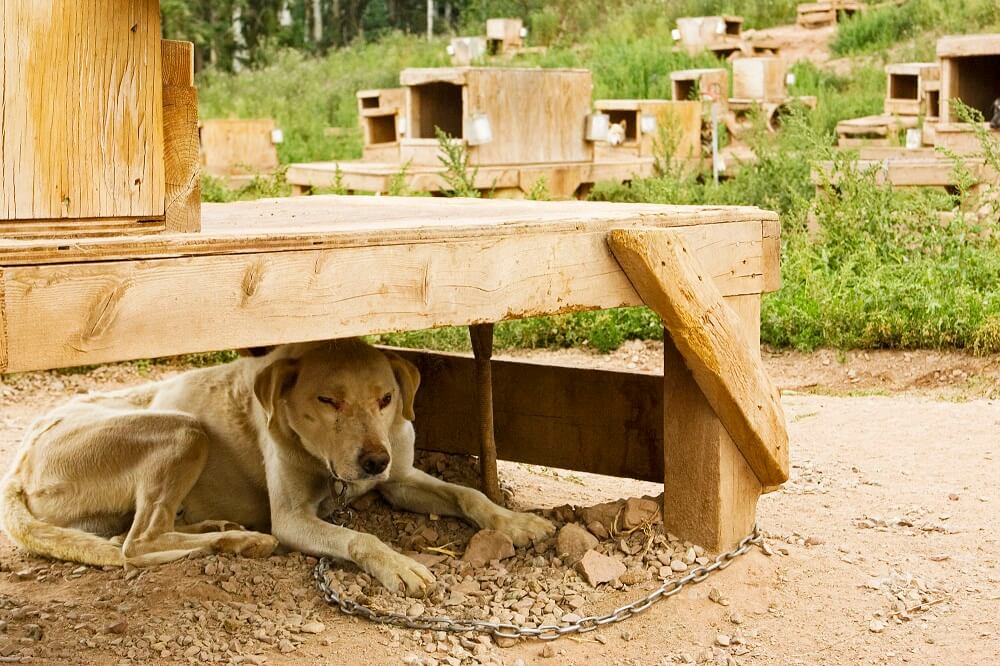
The American Journal of Respiratory and Critical Care Medicine reported that more than 80% of the dogs who finish the Iditarod sustain persistent lung damage. A separate study in the Journal of Veterinary Internal Medicine showed a 61 % increase in the incidence of stomach erosions or ulcers in dogs—as a direct result of endurance racing.
3. There’s no retirement plan.
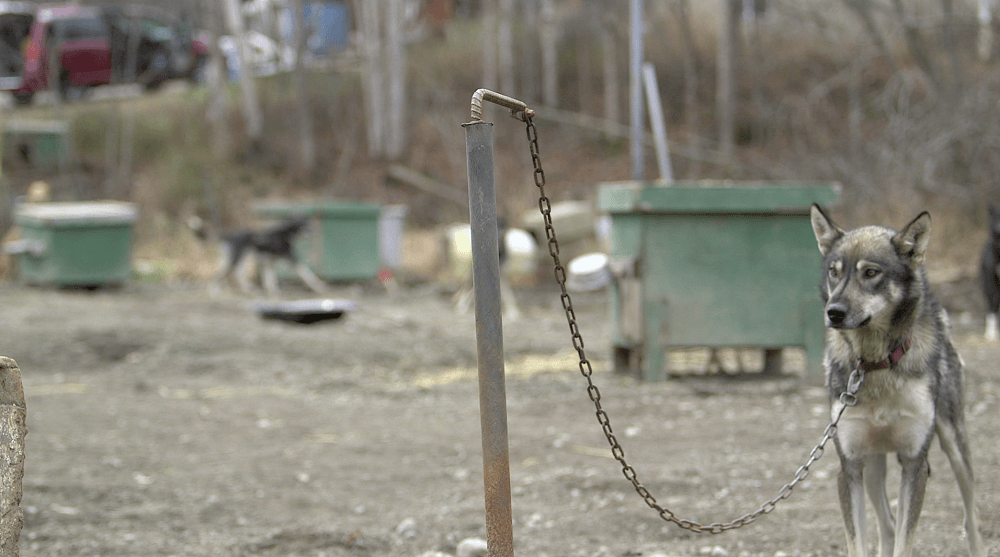
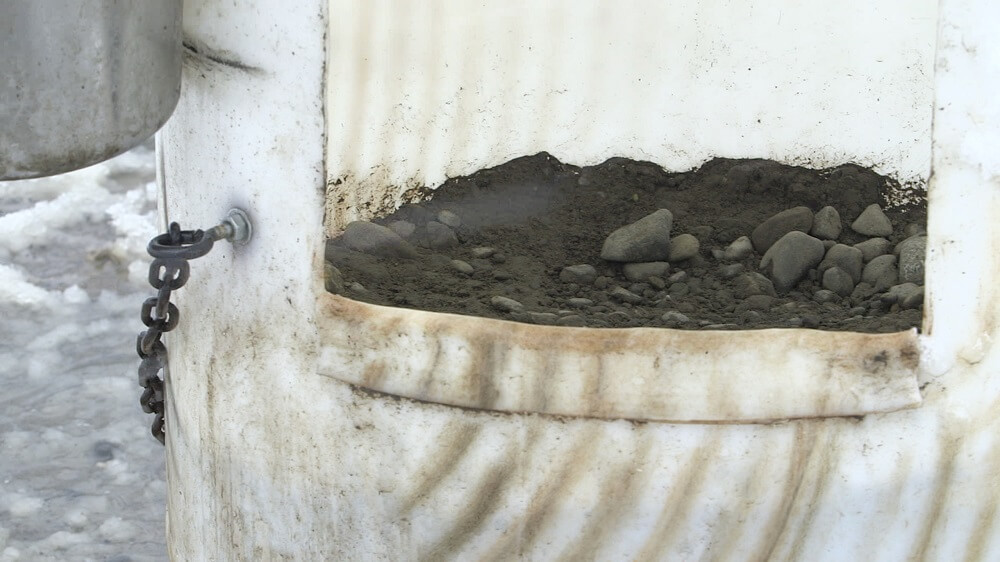
Sled-dog breeders have freely admitted that “surplus” dogs are killed. Thousands of dogs have been killed during the off-season because they weren’t fast or fit enough for competition. Dogs who finish the race but are no longer useful to the industry may be shot, drowned, or abandoned to starve.
4. Dogs pull mushers’ sleds an average of 100 miles a day.
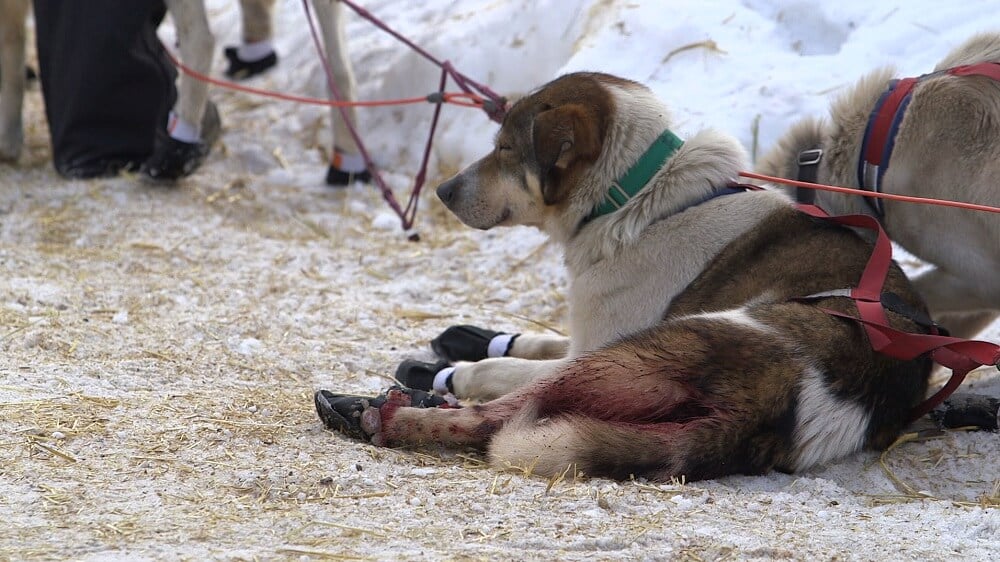
During the race, they’re expected to run approximately 1,000 miles in less than two weeks, and race rules mandate only 40 hours of rest over the entire span of the race. They’re prohibited from taking shelter during any part of the race, except for veterinary exams or treatment.
5. As many as half the dogs who start the Iditarod don’t finish.
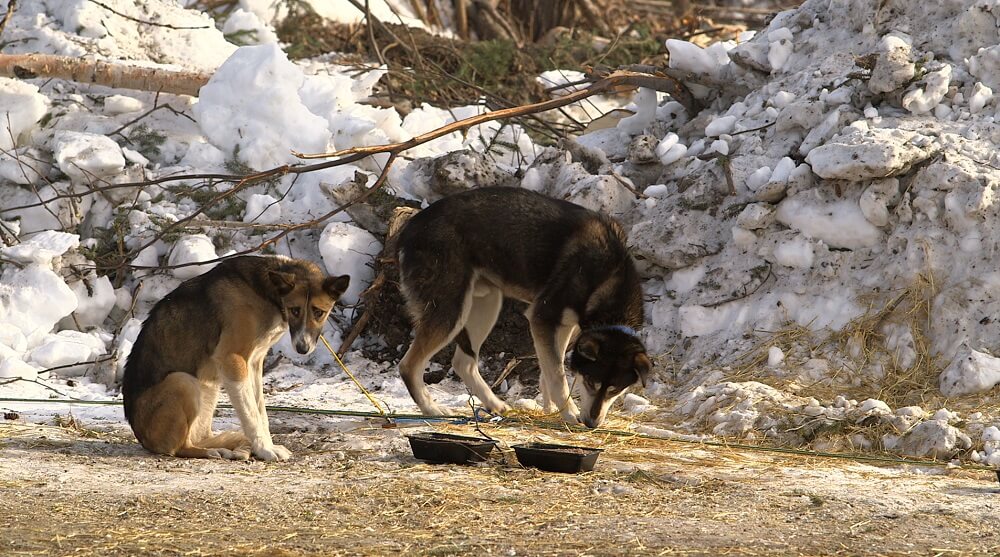
Hundreds of dogs are pulled out of the race each year, likely because they were too exhausted, ill, or injured to go on. Yet event rules require that only dogs who started the race be allowed to finish, meaning that the remaining animals must work under even more grueling circumstances, pulling even more weight.
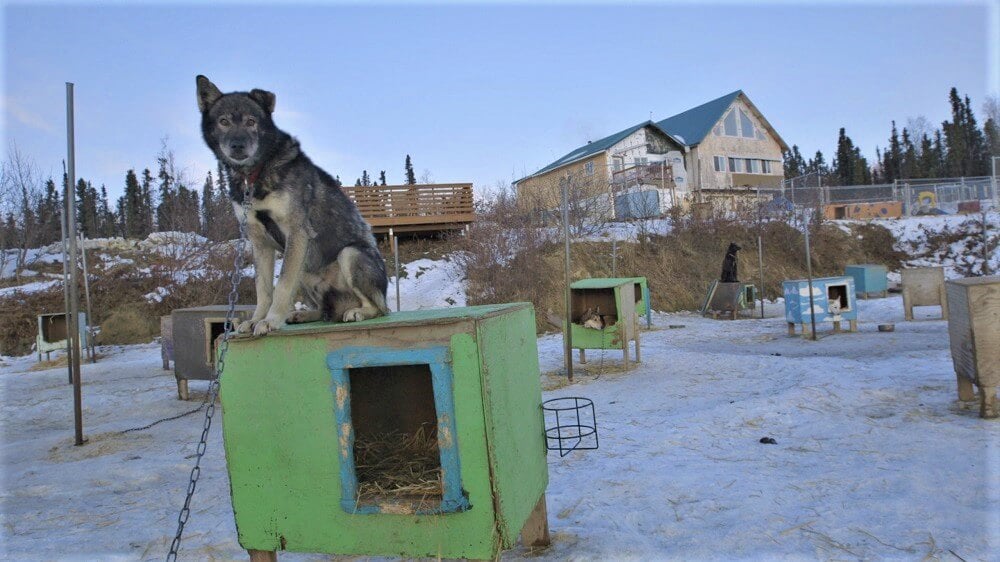
6. No dog would choose to run in this Arctic nightmare.
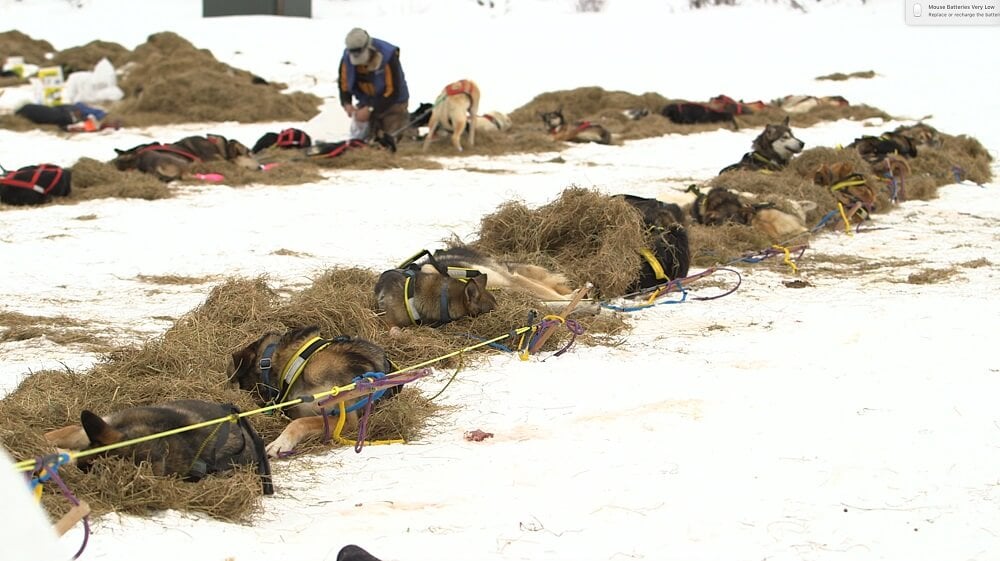
No dog voluntarily runs 1,000 miles in less than two weeks through wind, snowstorms, and subzero temperatures. Even while wearing booties, many incur bruised, cut, or swollen feet. They also suffer from bleeding stomach ulcers, pull or strain muscles, and sustain other injuries.
7. Thousands of dogs are bred each year for sled racing.
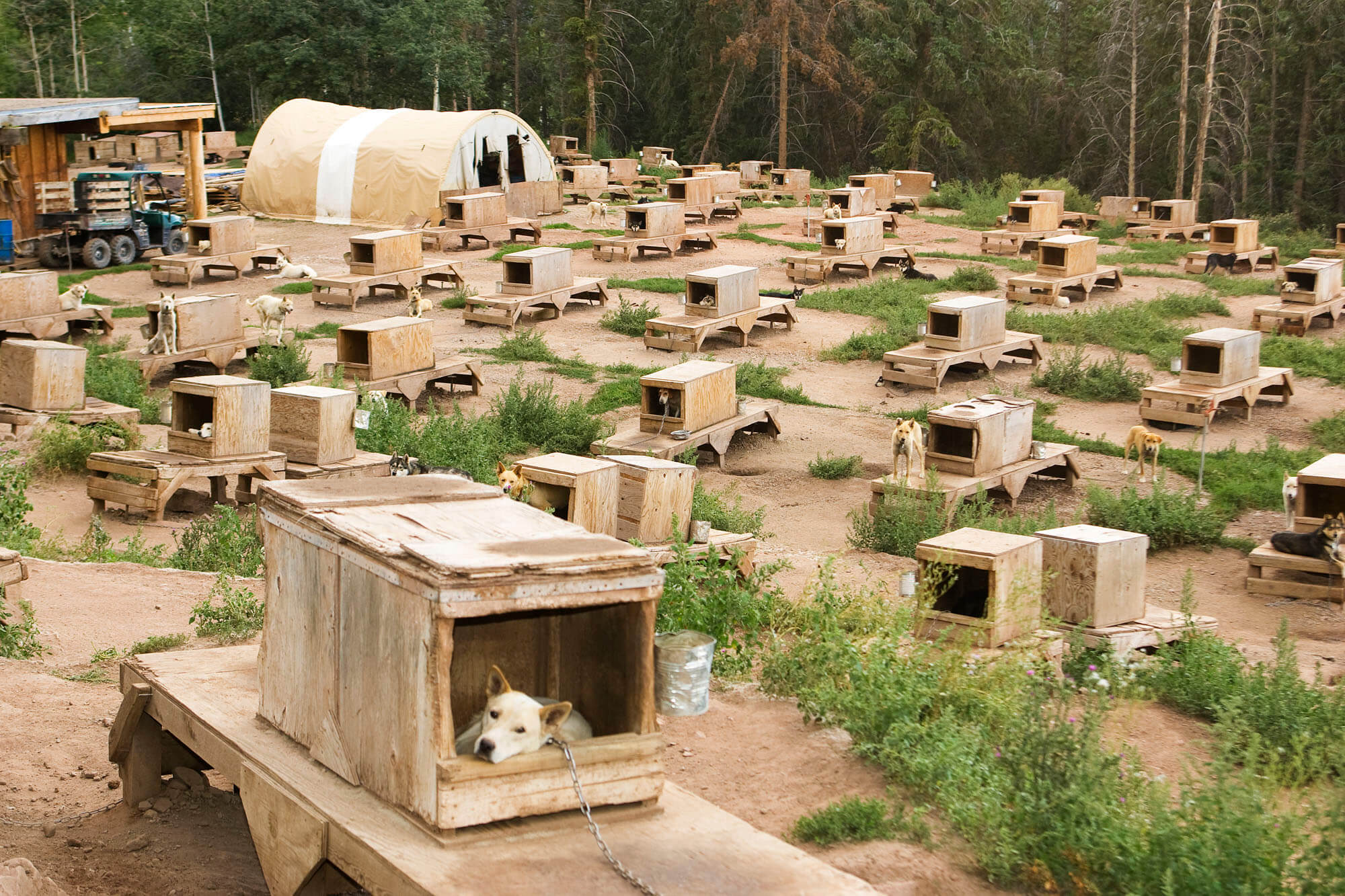
While thousands of dogs are bred for the Iditarod, only a few hundred of them will ultimately be deemed fit enough to compete, and many more will be kept chained for most of their lives, some with nothing more than dilapidated plastic crates as their shelter.
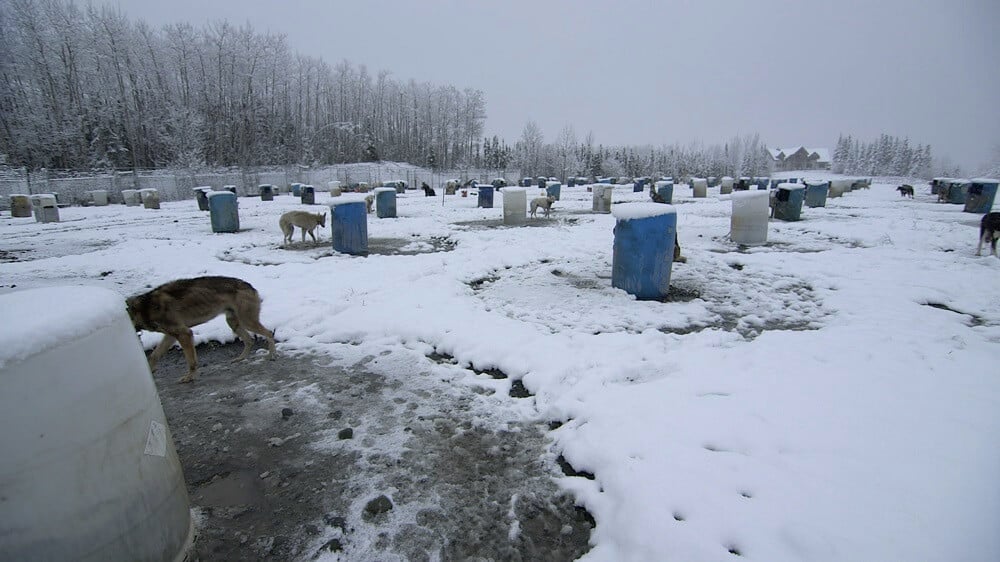
8. Dogs at sled-dog breeding compounds have died of numerous ailments.
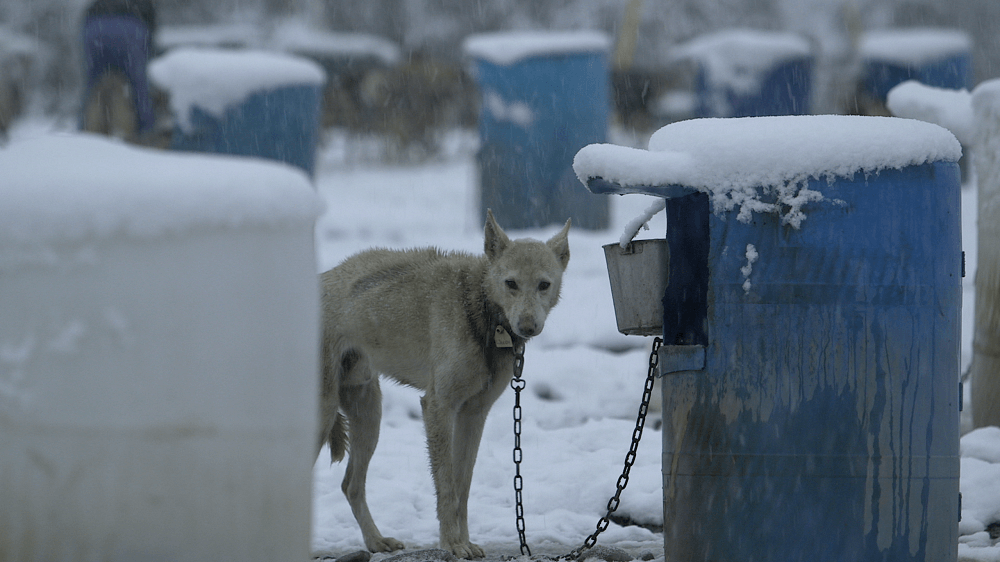
Some have frozen to death, while others have died of complications from eating rocks—presumably a result of the intense frustration of spending years on a chain.
Dogs deserve far better than a lifetime of isolation, cruelty, suffering, and death on the Iditarod Trail.
Please urge the Iditarod Trail Committee and the mayors of Anchorage and Nome—the start and finish points—to celebrate Alaskan huskies and protect them from suffering and death by replacing them with willing human cyclists, cross-country skiers, or snowmobilers.
You can do even more to help dogs by calling on corporate sponsors to drop the deadly Iditarod. Already, numerous companies have severed ties with the abusive race, including Jack Daniel’s, Coca-Cola, State Farm, Guggenheim, Wells Fargo, Costco, Maxwell House, Nestlé, Pizza Hut, Rite Aid, and Safeway.




